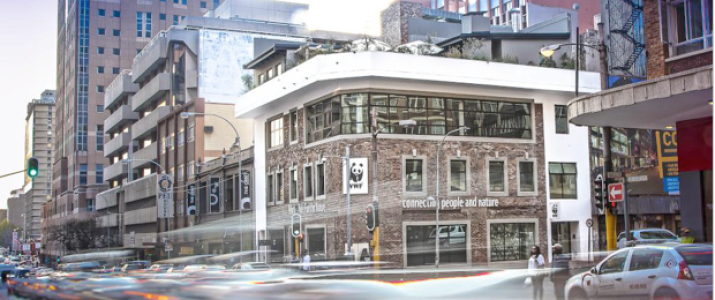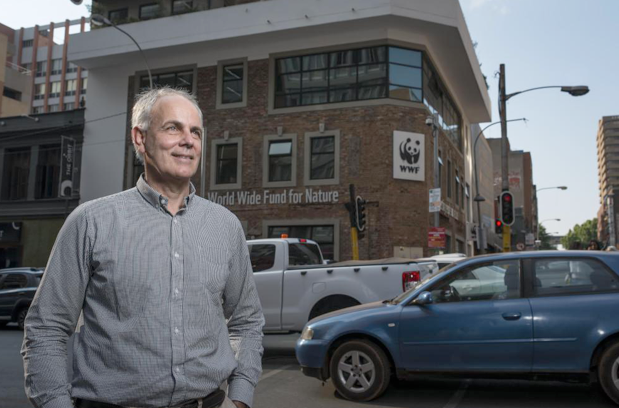
In 2013, the World Wide Fund for Nature (WWF) South Africa decided to move its regional office in Johannesburg from Rosebank to a tiny property that used to house a café on the corner of Melle and De Korte streets in the heart of Braamfontein.
WWF chose Braamfontein because it is an innovative, people-centred, economically vibrant neighbourhood at the heart of the city’s rejuvenation efforts, and it's close to educational institutions such as Wits and UJ.
The environmental NGO has been in South Africa for more than 50 years. It works across the country in a number of key environmental areas such as climate action, water, regenerative agriculture, the illegal wildlife trade, biodiversity and protected area expansion.
It’s one of the largest and most respected independent environmental organisations in the world and has a global network active in more than 100 countries. WWF’s mission is to stop the degradation of the earth’s natural environment and to build a future in which humans live in harmony with nature, by conserving the world’s biological diversity, ensuring that the use of renewable natural resources is sustainable, and promoting the reduction of pollution and wasteful consumption.

When WWF chose to relocate to Braamfontein, the management set itself the ambitious task of creating a building that was as ‘clean and green’ as possible within a limited budget. By 2015 the building had been refurbished, and the NGO is the proud owner of a National Green Building Council 6-star rated building.
Dr Morné du Plessis, CEO for WWF South Africa, says: “We did not build our new office, we reconstructed it. We reused and recycled everything that we could possibly salvage from this old structure. The WWF Braamfontein building ultimately disproves the notion that green buildings are expensive.”
WWF considers its refurbished building as a benchmark in sustainability and green building design. It showcases how innovative, practical and sustainable solutions – combined with creative design flare and lower cost production practices – can be adapted to influence the environmental impacts of a retrofitted structure.
The relatively modest four-storey building is easy to spot due to the distinctive WWF Panda logo that can be seen from both Melle and De Korte streets. It has a rooftop garden, cool meeting spaces and many energy and water-saving features built into it. In addition, there’s workspace and venue hire available for those who might wish to make use of the building.
“Braamfontein has had its challenges,” says Du Plessis, “but a targeted city improvement initiative such as #LoveBraam can greatly contribute towards making this a safer place for people to live and work and restore the energy that went into the original thinking around the rejuvenation of this inner-city precinct.”
https://www.instagram.com/wwfsouthafrica/